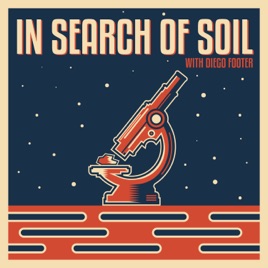
Advertise on podcast: In Search of Soil
Rating
4.8 from
Country
This podcast has
24 episodes
Language
Publisher
Explicit
No
Date created
2020/10/10
Average duration
71 min.
Release period
7 days
Description
Exploring the mysteries of soil in search of answers that you can use in your garden or on your farm. Each week features scientists and experts sharing insights into topics like soil science, composting, cover cropping, biochar, no-till, and fungi, among other things! In Search of Soil is hosted and produced by Diego Footer.
Social media
Check In Search of Soil social media presence
Podcast episodes
Check latest episodes from In Search of Soil podcast
Soil Macrofauna with Dr. Adriano Sofo - ISOS S2 #10
2023/07/29
In this episode of In Search of Soil, we’re talking to Italian soil Scientist Dr. Adriano Sofo to shed some light on the importance of soil macrofauna, earthworms, beetles, ants, and the like, and their roles in building healthier soil for more sustainable agriculture.
Dr. Adriano Sofo is an associate professor in the University of Basilicata in Matera, Italy. Cited more than four thousand times, his research interests include plant-soil interactions, biogeochemistry, and environmental botany. With a passion for educating, he believes that information dissemination is the key to creating a more sustainable and regenerative agricultural landscape.
List of Dr. Adriano Sofo’s Works
WATCH FULL EPISODES
YouTube https://bit.ly/watchISOS
SUPPORT EPIC GARDENING
→ Shop: https://growepic.co/shop
→ Seeds: https://growepic.co/botanicalinterests
LEARN MORE
→ All Our Channels: https://growepic.co/youtube
→ Blog: https://growepic.co/blog
→ Podcast: https://growepic.co/podcasts
→ Discord: https://growepic.co/discord
→ Instagram: https://growepic.co/insta
→ TikTok: https://growepic.co/tiktok
→ Pinterest: https://growepic.co/pinterest
→ Twitter: https://growepic.co/twitter
→ Facebook: https://growepic.co/facebook
→ FB Group: https://growepic.co/fbgroup
In this episode of In Search of Soil Traditional agricultural practices that deplete soil organic matter and biodiversity (01:45) How Dr. Sofo defines minimum till (05:23) The band of soil that plays the greatest role in agronomy and the band of soil you don’t want to disturb (07:04) Incorporating organic matter into the soil vs. leaving organic matter on the soil surface (10:07) Completely wet soil vs. wet soil surface: is there a difference in plant health? (14:05) It all depends on the root morphology and root architecture (18:15) How different irrigation systems can affect plant growth (19:33) Will tillage dry out soil faster? (24:50) Why isn’t sustainable agriculture viewed as a better option? Why do farmers still subscribe to conventional farming practices? (27:33) The soil has as much carbon as the biosphere and the atmosphere (32:38) The importance of soil microfauna, mesofauna, macrofauna, and megafauna (33:28) The roles that earthworms play in soil health (39:00) What roles do ants play in soil health? (42:15) Who aerates the soil more, earthworms or ants? (44:31) How to increase the earthworm population in your soils (47:42) Why does the soil collapse with tillage but maintains its structure with the macrofauna? (49:52) Speeding up the reversal of compaction (57:01) Aerating the soil with a broadfork (59:59) Is it possible to get to a point where you can let nature take care of the soil? (01:01:17) Choosing the gentle approach over the harsh approach (01:05:10) Organic matter in soil: layering vs. mixing (01:06:18) Defining sustainable agriculture today (01:09:57) What Dr. Adriano Sofo wants farmers to know (01:11:18)
more
The Science of EM (Essential Microorganisms) with Dr. Matthew Wood - ISOS S2 #9
2023/07/22
In this episode of In Search of Soil, we’re talking to one of the pioneers in developing probiotic technology, Dr. Matthew Wood, to shed some light on what efficient microbes (EM) are, what they do to the soil, and how our soils can benefit from adding them.
Dr. Matthew Wood earned his Bachelor’s degree in Soil and Atmospheric Sciences from the University of Missouri-Columbia and his Master’s degree working under Dr. Teruo Higa from the University of Ryukus in Okinawa, Japan. His work in probiotics resulted in global engagements in many fields including microbiology, agriculture, and human health. In 2004, he founded SCD Probiotics where they develop and commercialize consortia fermentation technologies for multiple industries.
More on microbes at SCD Probiotics: https://www.scdprobiotics.com/
WATCH FULL EPISODES
YouTube https://bit.ly/watchISOS
SUPPORT EPIC GARDENING
→ Shop: https://growepic.co/shop
→ Seeds: https://growepic.co/botanicalinterests
LEARN MORE
→ All Our Channels: https://growepic.co/youtube
→ Blog: https://growepic.co/blog
→ Podcast: https://growepic.co/podcasts
→ Discord: https://growepic.co/discord
→ Instagram: https://growepic.co/insta
→ TikTok: https://growepic.co/tiktok
→ Pinterest: https://growepic.co/pinterest
→ Twitter: https://growepic.co/twitter
→ Facebook: https://growepic.co/facebook
→ FB Group: https://growepic.co/fbgroup
In this episode of In Search of Soil Dr. Matthew Wood’s interest in the soil sciences (01:40) Studying in Japan and working with Dr. Teruo Higa (03:24) Notable findings working with Dr. Teruo Higa (04:43) An increase in the diversity index (05:05) Plant-microbe communication (06:53) What is EM? (08:35) The concept of consortia in the context of microbes (11:25) The whole is greater than the sum of individual parts (12:28) The question of the purity of cultures (15:11) What happens in the transition microbes go through (16:22) Cultured microbes adapting to the soil pH (19:25) Stimulating the biology in the soil (22:17) Observing a single microorganism would yield different findings versus observed together with other microorganisms (25:45) What EM will do to the microfauna in your local soil (28:35) A potential reason why EM hasn’t been adopted widely (30:30) An article about classifying soils based on which microbes were dominant in the system (31:22) How long before seeing the long-term changes made by EM (32:57) SCD Probiotics approach: biochemical products that act like chemicals Breaking the business: industrial, agricultural, consumer (35:57) Culturing out mother cultures and lowering the cost per application (38:29) Dr. Matthew Woods’ SCD product recommendations to start with (39:51) Using beneficial microorganisms as foliar feed (43:00) Ways that beneficial microbes push out pathogenic microbes (44:11) The worry of whether the beneficial microbes will live or die after applying them to a system (46:42) What EM’s major groups of microbes do for the soil (48:44) Adding a mother culture to a compost pile (51:29) Beneficial microbes neutralizing foul odors (54:48) Sharing the built-up localized bacteria base (55:33) Dr. Teruo Higa: It’s not the presence of the pathogen that causes the problem, it’s the high population of the pathogen that does. (57:17) Can you go overboard with adding mother culture to your soil? (59:06) Using a mother culture to re-energize depleted soils (01:00:35)
more
The Science of Biochar with Dr. Kurt Spokas - ISOS S2 #8
2023/07/15
In this episode of In Search of Soil, we’re talking to soil scientist Dr. Kurt Spokas of the United States Department of Agriculture to walk us through what biochar is, what it can potentially do, and what its limitations are when it comes to applying it to agricultural production.
Dr. Kurt Spokas is a soil scientist at the United States Department of Agriculture who has dedicated years of research on the impact of farming practices on the cycling of carbon, nitrogen, and other greenhouse gases, including transport and surface exchange of greenhouse gases. His areas of interest include biogeochemistry, contaminant hydrology and water quality, and soil physics.
Dr. Spokas' Publications: https://www.ars.usda.gov/midwest-area/stpaul/swmr/people/kurt-spokas/publications/
WATCH FULL EPISODES
YouTube https://bit.ly/watchISOS
SUPPORT EPIC GARDENING
→ Shop: https://growepic.co/shop
→ Seeds: https://growepic.co/botanicalinterests
LEARN MORE
→ All Our Channels: https://growepic.co/youtube
→ Blog: https://growepic.co/blog
→ Podcast: https://growepic.co/podcasts
→ Discord: https://growepic.co/discord
→ Instagram: https://growepic.co/insta
→ TikTok: https://growepic.co/tiktok
→ Pinterest: https://growepic.co/pinterest
→ Twitter: https://growepic.co/twitter
→ Facebook: https://growepic.co/facebook
→ FB Group: https://growepic.co/fbgroup
In this episode of In Search of Soil Any changes in what we know about biochar in the last 10 years? (01:42) Questions that still remain around biochar (02:20) Why we can’t yet answer how biochar works (02:51) Biochar: a positive, a negative, or neither? (04:48) Potential negatives of biochar that can possibly hinder plant growth (05:56) Dr. Kurt Spokas’ research on biochar on the nitrogen cycle (08:05) Biochar to potentially mitigate nitrous oxide emissions (09:24) The variability between biochars (10:27) The differences and nuances of variability between biochars (12:36) Variably defined biochars in different studies (13:18) Aged biochars (14:50) What changes are happening in a biochar undergoing oxidation? (16:26) Biochar for agriculture before completely understanding what it is and what it does (18:08) No two biochars are the same (19:57) Is there a sweet spot for feedstock materials to use as biochar? (20:55) Silica deficiency in soils (22:53) Silica entering the soil (23:32) Scientific knowns when it comes to biochar (24:06) Biochar’s potential as construction material (26:30) Can you use biochar as a substitute in a potting mix? (27:20) Can a small amount of biochar make a difference? (28:16) Is more biochar better than less biochar? (30:07) Adding the bio to the char to become biochar (30:44) Why nutrients attach to biochars (32:32) Surface area of organic matter vs. surface area of biochar (34:15) How long can the carbon in biochar sit in the soil? (35:40) What makes the carbon in biochar unique (37:05) Gradual breaking down of carbon over time (39:06) Adding carbon now via biochar is adding carbon later (40:33) Biochar and beneficial agricultural microbial groups (41:42) Amazonian soils, Terra Preta, and biochar (42:48) Was adding charcoal to the soil actually intentional? (46:40) Can we say the char actually made the soils better? (48:03) Higher microbial populations, slower carbon turnover (49:49) The microbe population that appears high in Terra Preta soils (52:47) To add or not to add biochar to your farmland? (53:33) Potential negative to adding biochar (54:52) A key piece of information to quantifying biochar and its effects (56:22) Reproducibility of activated carbon products (57:46) Pushing the science of biochar forward (01:00:07) Homemade biochars (01:01:36) Biochars and potential toxins such a heavy metals and toxic organic compounds (01:04:01) For farmers: some takeaways about biochar (01:07:06) Where to find more information on biochar, its application, etc. (01:08:32) Where to find Dr. Kurt Spoka
more
The Role of Clay in Soils with Dr. David Laird - ISOS S2 #7
2023/07/08
In this episode of In Search of Soil, we’re talking to Dr. David Laird of Iowa State University to shed some light on what it means to have clay soil, what its benefits and drawbacks are on agricultural production, as well as de-mystifying some common misconceptions on clay soils.
Dr. David Laird is a professor at Iowa State University Department of Agronomy. As a soil scientist, he has authored and co-authored more than 120 journal articles and book chapters on many subjects, most notably on clay mineralogy. Dr. Laird’s research interests include carbon sequestration, chemical, mineralogical, and surface properties of soil clays, nutrient leaching, and the impact of biochar on soil quality, among many others.
Dr. David Laird’s Publications
WATCH FULL EPISODES
YouTube https://bit.ly/watchISOS
SUPPORT EPIC GARDENING
→ Shop: https://growepic.co/shop
→ Seeds: https://growepic.co/botanicalinterests
LEARN MORE
→ All Our Channels: https://growepic.co/youtube
→ Blog: https://growepic.co/blog
→ Podcast: https://growepic.co/podcasts
→ Discord: https://growepic.co/discord
→ Instagram: https://growepic.co/insta
→ TikTok: https://growepic.co/tiktok
→ Pinterest: https://growepic.co/pinterest
→ Twitter: https://growepic.co/twitter
→ Facebook: https://growepic.co/facebook
→ FB Group: https://growepic.co/fbgroup
In this episode of In Search of Soil Common misconceptions around clay from an agricultural producer standpoint (02:07) Clays evolve over time (04:05) How clays affect agricultural productivity (05:42) Why cation exchange capacities of clay are important in agriculture (08:51) Minerals: sand vs. clay (10:38) Quartz particle size and clay particle size (14:55) The time it takes for a clay to dissolve like a quartz would (20:55) Factors affecting the evolution of clay in the Great Plains and the variation of clay and mineral contents across geographies (23:02) Will a plant be able to tell the difference between clays and will there be a difference in performance? (33:33) Are minerals in clay biologically available for microbial use? (34:34) Incredibly weathered soil in the tropics and yet it supports the greatest biome on the planet (36:42) An ecosystem with stable and accessible nutrients (38:44) The process of smectites being broken down (39:33) What in biology breaks the smectite bonds? (41:19) How can a positively charged ion knock off a negatively charged ion if they’re equal strength? (44:24) Plant absorbing the nutrients knocked off the smectites (46:53) Soil evolution and why row crop soils tend to acidify (50:28) What happens to the clay when plants are introduced into the soil? (51:20) Can you turn a sandy soil into a more productive loam by adding in clay? (01:01:09) Clay is good, but there’s such a thing as too much clay (01:05:58) Would it make sense to add sand to a clay-heavy soil?(01:09:06) Can roots make a difference in breaking up a clay-heavy soil? (01:10:17) Interactions between clay in the soil and organic matter (01:12:42) The dynamic changes occurring between clay and organic matter (01:16:19) Does clay always protect organic matter? (01:21:52) Comparing the cation exchange capacity between clays and organic matter (01:23:47) Roots proceed down the path of least resistance (01:27:54) Comparing the surface area of clay vs. the surface area of organic matter (01:29:26)
more
Applying Better Soil Microbes with Dr. Jane Fife - ISOS S2 #6
2023/07/01
In this episode of In Search of Soil, we’re talking to 3Bar Biologic’s Dr. Jane Fife to shed some light on microbial biologics, realistic expectations of what they can do to our soils and our crops, and a little bit about the biological products industry.
Dr. Jane Fife is the Chief Science Officer at 3Bar Biologics as well as an Adjunct Faculty at The Ohio State University. With more than twenty years of applied research experience, she is a proven leader in research in agricultural application technologies, biologics, and precision agriculture. Her main points of interest include more targeted delivery of agricultural inputs for safer, more sustainably produced food.
More on 3Bar Biologics: https://www.3barbiologics.com/
WATCH FULL EPISODES
YouTube https://bit.ly/watchISOS
SUPPORT EPIC GARDENING
→ Shop: https://growepic.co/shop
→ Seeds: https://growepic.co/botanicalinterests
LEARN MORE
→ All Our Channels: https://growepic.co/youtube
→ Blog: https://growepic.co/blog
→ Podcast: https://growepic.co/podcasts
→ Discord: https://growepic.co/discord
→ Instagram: https://growepic.co/insta
→ TikTok: https://growepic.co/tiktok
→ Pinterest: https://growepic.co/pinterest
→ Twitter: https://growepic.co/twitter
→ Facebook: https://growepic.co/facebook
→ FB Group: https://growepic.co/fbgroup
In this episode of In Search of Soil The limitations of applying biologicals to the seed coat and as a soil surface spray (02:00) Opening the spectrum of microbial biologicals by adjusting the time of application (05:10) Ohio State University and how 3Bar Biologics came to be (07:36) How difficult is it to culture beneficial microbes? (09:22) Dry formulations of microbials (11:08) Efficacy between wet and dry-formulated products (12:28) Regionality and efficacy of microbes (13:40) Realistic expectations in applying microbial biologicals (15:36) A sweet spot where microbes can really help (18:03) How much agricultural practices affect the microbes already present in the soil (22:31) Will there be significant improvements on the crop if there were no application constraints on microbial biologicals? (26:22) How much microbes are taken in by the plant through foliar feeding? (28:48) Effectivity of foliar feeding vs. root feeding (31:08) How much of the biologicals is actually wasted in the soil? (33:07) Why can’t soil microbes stay and proliferate in the soil if they’re already soil-borne? (35:30) Healthiest when there’s a large diversity of microbes (39:12) Soil organisms that proved to be interesting hence 3Bar was born (40:52) What live microbe technology would look like on the farm (43:50) Grow the microbes as close to the point of use as possible (46:25) 3Bar’s Biostimulant (47:00) Are microbial biologicals targeted for specific crops? (48:53) Optimum application for microbial biologicals (50:24) For transplanted crops, would it make sense to apply microbials in a nursery setting? (52:06) What information should growers look for when seeking out microbial biologicals? (53:19) Snake oil, regulations, and the agricultural microbials industry (57:10) Having appropriate and realistic expectations with 3Bar’s microbial technology (59:52) Farmers willing to try and experiment in their own farms and see for themselves (01:01:37) Where would the agricultural microbials industry be in 10 years’ time? (01:04:40) The rough cost per acre of application of 3Bar’s microbial technologies (01:06:58) Where to go to learn more about 3Bar, what they’re doing, and what they’re offering (01:07:53)
more
Benefits of Trichoderma with Dr. Gary Harman - ISOS S2 #5
2023/06/24
In this episode of In Search of Soil, we have Dr. Gary Harman of Cornell University on the show to talk about what Trichoderma is, what it does to the soil and all the benefits that it brings to plants and crops.
Dr. Gary Harman is a Professor Emeritus at Cornell University College of Agricultural and Life Sciences, School of Integrative Plant Science. His fields of specialization include biological control systems, plant-microbe interactions, and fungal genetics. With more than forty years’ worth of research under his belt, he has published more than 150 on these topics, most notably on agriculturally beneficial Trichoderma species.
Purchase Trichoderma (Rootshield)
WATCH FULL EPISODES
YouTube https://bit.ly/watchISOS
SUPPORT EPIC GARDENING
→ Shop: https://growepic.co/shop
→ Seeds: https://growepic.co/botanicalinterests
LEARN MORE
→ All Our Channels: https://growepic.co/youtube
→ Blog: https://growepic.co/blog
→ Podcast: https://growepic.co/podcasts
→ Discord: https://growepic.co/discord
→ Instagram: https://growepic.co/insta
→ TikTok: https://growepic.co/tiktok
→ Pinterest: https://growepic.co/pinterest
→ Twitter: https://growepic.co/twitter
→ Facebook: https://growepic.co/facebook
→ FB Group: https://growepic.co/fbgroup
In this episode of In Search of Soil Diego introduces the episode and the guest, Dr. Gary Harman (00:22) What is trichoderma? (01:18) The interest in trichoderma for agricultural purposes (02:26) Wild-type species of trichoderma and strain-specific agricultural benefits (05:15) The role of trichoderma in the soil microbiome (06:15) Beneficial trichoderma species naturally occurring in agricultural soils (08:58) The dominance of trichoderma over disease-causing fungi (10:18) Trichoderma induced plants to control disease (12:40) Trichoderma helps plants suppress diseases (14:05) Having the pathogens stick around vs. killing them off (14:58) Gene priming and upstream regulation of RNA (16:00) Trichoderma feedback from plants (17:17) No evolutionary feedback with the trichoderma (20:45) How effective is trichoderma in increasing plant resistance to known plant diseases? (22:13) The difference between disease resistance as a trait vs. disease resistance through gene priming from trichoderma (23:08) When a farmer doesn’t want to add trichoderma but wants to encourage the microbiome already in their soil (24:42) Externally adding trichoderma to soils (27:07) How vast can trichoderma grow to? (29:51) Increased root growth with trichoderma (30:45) Mineral nutrition and trichoderma (32:13) Our current understanding of plant-microbe interactions (34:38) Trichoderma are not mycorrhiza (35:46) Why trichoderma can be cultured outside a host (37:08) Adding trichoderma at the seed level (38:12) Biologicals: inconsistent at best, snake oil at worst (41:34) Applying trichoderma if you’re a small-acreage grower (43:58) Applying trichoderma on the leaves of a grown plant (48:45) Does trichoderma have any effect on pests? (51:36) Are live roots the only things trichoderma needs? (54:37) Cherry picking results for marketing purposes (55:38) More robust root system and an affected aboveground growth (57:45) How trichoderma in the wild reproduce (59:45) Korean natural farming and wild harvesting molds (01:02:13) Which trichoderma to get (01:04:06) Antibiotic material from trichoderma (01:06:03) A trichoderma will do what a trichoderma will do (in terms of disease resistance) (01:08:35) What’ll happen if there were a sudden 100% increase of trichoderma use (01:10:32) Will mycorrhizae ever be commercialized? (01:11:45) No negative repercussions with trichoderma (01:14:35) Why do plants need trichoderma to become more disease resistant? (01:15:58) The possibility of having a locally-adapted strain of trichoderma (01:19:50) Keep up-to-date with Dr. Gary Harman’s work (01:22:35)
more
Regenerative Soils with Dr. Gabe Kenne - ISOS S2 #4
2023/06/17
In recent years, there’s been a visible shift of farmers and growers, especially the younger ones, moving into more regenerative agricultural practices. That as may be, there are still a sizeable amount of growers who are firm in their conventional practices for one reason or another.
In this episode of In Search of Soil, we’re talking to Dr. Gabe Kenne of the University of South Carolina to share a bit about trialing different growing practices involving tillage, no-till, and cover crops, as well as some of the nuances behind the varied soil tests we can get for our land.
Dr. Gabe Kenne is a Postdoctoral Researcher and Soil Molecular Biologist whose field of interest includes examining ways to better understand healthy soils in agricultural systems and how to subsequently promote agricultural practices that are environmentally responsible and sustainable. Currently, he is exploring nutrient cyclin potential in variously managed agricultural soils, as well as ways in which crops can be healthy and productive while minimizing synthetic inputs.
WATCH FULL EPISODES
YouTube https://bit.ly/watchISOS
SUPPORT EPIC GARDENING
→ Shop: https://growepic.co/shop
→ Seeds: https://growepic.co/botanicalinterests
LEARN MORE
→ All Our Channels: https://growepic.co/youtube
→ Blog: https://growepic.co/blog
→ Podcast: https://growepic.co/podcasts
→ Discord: https://growepic.co/discord
→ Instagram: https://growepic.co/insta
→ TikTok: https://growepic.co/tiktok
→ Pinterest: https://growepic.co/pinterest
→ Twitter: https://growepic.co/twitter
→ Facebook: https://growepic.co/facebook
→ FB Group: https://growepic.co/fbgroup
In this episode of In Search of Soil Diego introduces the episode’s guest, Dr. Gabe Kenne (00:24) Areas of regenerative agriculture that deserve more research (01:45) Proposing research for potential solutions that affect farmers’ livelihoods (04:34) A long-held traditional agricultural view that farmers firmly hold onto (05:51) Reasonable expectations to set when going no-till (08:14) Where science is right now with regards to no-till (10:30) On individuals perceiving no-till as a risky endeavor (14:02) The cover crop project (16:05) Project participants and their shifted views (18:48) Tremendous changes in soil in the cover crop project (20:30) Where is the rise in soil organic matter coming from? (23:16) The increase of organic matter in the soil relative to the increase of organic matter on the soil surface (26:56) The role of no-till in building the soil underground with cover crops (29:07) The lesser evil: no-till with fallow or cover crop with tillage? (31:00) The worries in a no-till, no cover crop model (32:34) What a farmer should expect with four different treatments (34:30) What to start thinking about when it comes to traditional agriculture vs. regenerative agriculture (37:23) Is it possible to grow cash crops with regenerative ag without adding nitrogen? (39:20) A bigger cumulative yield (41:32) Agriculture as a tool to sink carbon into the soil (42:52) Is there a cap on how much carbon soil can take? (46:55) Crop performance relative to increases in soil carbon (49:42) Putting microbes back into the soil in conventional agriculture (51:50) The difference between soil tests (54:50) Where soil tests can be inaccurate (59:52) How many soil tests are there? (01:02:43) A misfit soil test based on your farming management system (01:04:16) Can a soil test be argued to be useless? (01:05:10) If people want to get a biological soil test (01:08:44) A patch work solution to soil tests in different contexts (01:10:30)
more
Soil Microbes with Dr. Paul Zorner - ISOS S2 #3
2023/06/10
As farmers and growers, one of the number one things we need to take good care of to ensure good production is our soil. Now, there are a ton of practices and amendments available that supposedly make our soils healthier, from compost to compost teas, to biochar, to a lot of other things.
Consequently, one such amendment that’s coming more and more into light these past few years is live microbial amendments. Microbial amendments help both stimulate and improve the microbial fauna in the soil that keep our crops healthy. And we have Dr. Paul Zorner of Locus Ag to talk about how microbial amendments do just that.
Dr. Paul Zorner is an Adjunct Professor at the Department of Horticulture at North Carolina State University, as well as Chief Executive Officer and Chief Agronomist of Locus Agricultural Solutions, an agricultural company that produces microbial probiotics. Firmly believing that agriculture is one of the most sustainable ways to mitigate our current climate issues, he is also one of the key proponents to actively push for incentivizing farmers to sequester carbon in the soil to improve global CO2 emissions.
https://locusag.com/
WATCH FULL EPISODES
YouTube https://bit.ly/watchISOS
SUPPORT EPIC GARDENING
→ Shop: https://growepic.co/shop
→ Seeds: https://growepic.co/botanicalinterests
LEARN MORE
→ All Our Channels: https://growepic.co/youtube
→ Blog: https://growepic.co/blog
→ Podcast: https://growepic.co/podcasts
→ Discord: https://growepic.co/discord
→ Instagram: https://growepic.co/insta
→ TikTok: https://growepic.co/tiktok
→ Pinterest: https://growepic.co/pinterest
→ Twitter: https://growepic.co/twitter
→ Facebook: https://growepic.co/facebook
→ FB Group: https://growepic.co/fbgroup
In this episode of In Search of Soil: Diego introduces the episode’s guest, Dr. Paul Zorner (00:58) Is our view of soil and the complex relationships within it too reductionist? (01:45) The wonders of human intuition (03:42) Mycogen, theories, and how they played out over time (06:52) Dr. Paul Zorner’s thoughts on weeds in their function in the succession of a landscape (10:38) Weeds and cover crop are closely related in terms of what they do (15:14) A potential net positive to plant growth competition (15:43) Can you get your soil healthy enough that it won’t allow weeds to grow? (18:42) Moving higher up in the succession with the plants you want to grow (21:20) Different weeds have different relationships with different microbes (25:00) Can the biological side of agriculture catch up to the yields from conventional agriculture? (27:27) Are you stunting the biological potential of the soil if you give easily accessible nutrients to plants vs. microbe food? (32:18) Adding microbes to help fast track building up soil (36:58) Putting the sugarcane back into the field—minus the sugar (39:20) Quorum sensing (40:30) Is any practice involving the addition of microbes to the soil beneficial? (45:02) Environmental sequencing in a metagenome (46:18) Getting the right microbes to get the ball rolling (47:42) Why adding microbial amendments yield inconsistent results (50:12) Why is there a need to reapply microbial amendments, can’t they reproduce in the soil in their own? (53:34) An increase in positive effects after application of microbial soil amendments before the eventual plateau (56:28) What happens to the plant after having Rhizolizer® that makes it grow more roots? (59:54) Will putting microbial amendments result in higher yield? (01:03:30) Addressing the location issue for microbial amendments (01:06:50) Inoculating with microbial amendments at the time of seeding (01:09:12) Is there a benefit to adding microbial food sources without the microbes? (01:10:32) Off-shelf options that feed soil microbes (01:14:02) Common microbes that tend to be missing in agricultural soils (01:14:52) Finding out to include Trichoderma in the mix (01:17:21) What Trichoder
more
Soil Humus with Dr. Johannes Lehman - ISOS S2 #2
2023/06/03
In this episode of In Search of Soil, we have Dr. Johannes Lehmann, one of the leading scientists in the field of soil biogeochemistry. We’ll discuss and question everything we know—or think we know—about humus, biochar, and soil organic matter with insightful, thought-provoking discussions.
Dr. Johannes Lehmann is a professor at Cornell University College of Agriculture and Life Sciences with a profound interest in advancing studies on biogeochemical cycles of carbon and nutrient elements in soil. Apart from pioneering studies on biochar in the 90’s, his current field of research is locally and globally relevant, impacting both climate change and environmental pollution.
WATCH FULL EPISODES
YouTube https://bit.ly/watchISOS
SUPPORT EPIC GARDENING
→ Shop: https://growepic.co/shop
→ Seeds: https://growepic.co/botanicalinterests
LEARN MORE
→ All Our Channels: https://growepic.co/youtube
→ Blog: https://growepic.co/blog
→ Podcast: https://growepic.co/podcasts
→ Discord: https://growepic.co/discord
→ Instagram: https://growepic.co/insta
→ TikTok: https://growepic.co/tiktok
→ Pinterest: https://growepic.co/pinterest
→ Twitter: https://growepic.co/twitter
→ Facebook: https://growepic.co/facebook
→ FB Group: https://growepic.co/fbgroup
In this episode of In Search of Soil: Introduction to today’s guest, Johannes Lehmann (00:46) Johannes Lehmann on our general understanding of organic matter in soil (01:55) The key unknown to hasten our progress to understand soil (06:00) Finer points that are unknown, mainly the intricate interactions between microorganisms (08:12) The theory of humus and why it made sense (10:20) Humus, as we understand it, does not exist (17:34) The initial thought behind the formation of humus (19:38) In situ: microorganisms, soil, and carbon (20:53) An analogy of functional complexity (25:40) The question of the evolution of soil microorganisms (29:15) Is the lack of microorganismal evolution nature protecting itself? (31:20) The accessibility of carbon and its potential buildup (32:05) The amount of labile carbon vs. the amount of recalcitrant carbon (36:25) What tillage does to the carbon in the soil (38:27) Where the long-term carbon storage in soil happens (41:23) Adding more stored carbon into the soil (44:18) The carbon lost from the soil over the last thousands of years (51:43) Does more microbial population in the soil mean higher CO2 emissions? (53:19) How much carbon leaks out of a certain farming model (57:40) How beneficial is biochar to carbon sequestration? (01:00:52) Justifying the cost of using biochar (01:09:25) The possibility of positive plant growth results with the use of biochar (01:18:42) Thinking about whether to compost or make biochar out of manure (01:23:08) Does pyrolyzing manure break down persistent herbicides? (01:29:32) Organic matter, water-holding capacity, and context (01:31:17) The value of carbon left after mineralization (01:36:45) Microbial and abiotic nitrogen cycles (01:38:32) The ammonia gas in the soil (01:43:22) Where to keep up-to-date with current research and all things biochar (01:44:35)
more
Biochar with Francesco Tortorici - ISOS S2 #1
2023/05/27
In this episode of In Search of Soil, we have biochar scientist and citizen scientist advocate Francesco Tortorici to fill in those knowledge gaps and encourage you to push forward with being a responsible citizen scientist.
Francesco Tortorici is an engineer by trade, and since 2014, he has worked with the Port Townsend designing and building biochar filters that remove heavy metals from stormwater runoffs. He and his wife Joan founded Olympic Biochar in 2015 to promote biochar and its benefits and provide good, locally-made biochar.
Learn about Francesco Tortorici - https://www.olympicbiochar.com/
WATCH FULL EPISODES
YouTube https://bit.ly/watchISOS
SUPPORT EPIC GARDENING
→ Shop: https://growepic.co/shop
→ Seeds: https://growepic.co/botanicalinterests
LEARN MORE
→ All Our Channels: https://growepic.co/youtube
→ Blog: https://growepic.co/blog
→ Podcast: https://growepic.co/podcasts
→ Discord: https://growepic.co/discord
→ Instagram: https://growepic.co/insta
→ TikTok: https://growepic.co/tiktok
→ Pinterest: https://growepic.co/pinterest
→ Twitter: https://growepic.co/twitter
→ Facebook: https://growepic.co/facebook
→ FB Group: https://growepic.co/fbgroup
In this episode of In Search of Soil: Diego introduces the episode’s guest, Francesco Tortorici (00:35) Francesco Tortorici’s claim to fame in the world of biochar (01:15) How Francesco views citizen scientists and how they fit into greater research (03:08) Doing trials with controls in your context instead of blind following (06:10) The need to fully understand your context and the biochar you plan to use (08:37) Not all biochars are created equal (09:52) Francesco Tortorici’s definition of biochar (10:52) Biochar isn’t biochar until it’s biologically active (12:02) Biochar and what’s left after the carbon (14:00) The soil benefits of sequestering atmospheric carbon in the soil versus using compost carbon (14:42) Why has the Pacific North West look at biochar as a way to guide the soil? (19:37) Some case studies of university research trials and citizen science trials and their results (22:38) Biochar doesn’t directly help the plant per se, it enhances the biological community (29:55) The possible negatives of putting in biochar (32:12) Worm avoidance test (35:50) What to look for and what to avoid in choosing commercial biochar (37:26) International Biochar Initiative standards, PAHs, PCBs, and dioxins (39:35) Which biochar to use if you’re growing vegetables (40:24) Measuring the pH of the soil and Francesco’s view on biochar affecting soil pH (42:08) The only apparent trade-off for biochar: time, money, effort (45:20) A concern: the potential of concentrating heavy metals biochar by burning long-lived trees that absorbed large amounts of pollution (49:35) A question you should raise: what do the microorganisms eat and transmute into something else? (52:30) Fransesco’s input on application rate and rules of thumb (54:40) Will you see different results working on a kiln and a retort? (58:38) Ash to char ratio and burning smaller feedstock (01:02:25) Tips on how to be a good kiln operator: what to look for (01:04:50) Humans’ intrinsic connection with fire (01:10:13) Adding biomass: more of stacking pancakes instead of piling everything in one go (01:13:55) Digging a cone out of the ground instead of fabricating a kiln (01:16:55) Quenching the burn: what does water do apart from extinguishing the fire? (01:18:36) What’s next after you’ve got your biochar sitting in your kiln (01:21:17) Other potential uses of biochar (01:23:23) Is biochar activated carbon? (01:30:00) One thing Francesco wants everyone to take away about biochar (01:34:25) Where to find Francesco and his work on biochar (01:35:28)
more
iSOS Season Transition 1
2023/05/20
We're collecting a new batch of In Search Of Soil episodes! Season 2 starts next week. We know you'll love what comes next! Stay tuned for more deep-dive explorations into the science behind your soil!
While you wait, we'd love for you to experience some of the other great stuff we have to offer:
WATCH FULL EPISODES
YouTube https://bit.ly/watchISOS
SUPPORT EPIC GARDENING
→ Shop: https://growepic.co/shop
→ Seeds: https://growepic.co/botanicalinterests
LEARN MORE
→ All Our Channels: https://growepic.co/youtube
→ Blog: https://growepic.co/blog
→ Podcast: https://growepic.co/podcasts
→ Discord: https://growepic.co/discord
→ Instagram: https://growepic.co/insta
→ TikTok: https://growepic.co/tiktok
→ Pinterest: https://growepic.co/pinterest
→ Twitter: https://growepic.co/twitter
→ Facebook: https://growepic.co/facebook
→ FB Group: https://growepic.co/fbgroup
more
In Search Of Soil: Season 2 Coming Soon!
2023/05/13
We're cultivating a new crop of In Search Of Soil episodes for you, and Season 2 is coming soon! Stay tuned for the next batch of explorations into the science behind your soil!
While you wait, we'd love for you to experience some of the other great stuff we have to offer:
WATCH FULL EPISODES
YouTube https://bit.ly/watchISOS
SUPPORT EPIC GARDENING
→ Shop: https://growepic.co/shop
→ Seeds: https://growepic.co/botanicalinterests
LEARN MORE
→ All Our Channels: https://growepic.co/youtube
→ Blog: https://growepic.co/blog
→ Podcast: https://growepic.co/podcasts
→ Discord: https://growepic.co/discord
→ Instagram: https://growepic.co/insta
→ TikTok: https://growepic.co/tiktok
→ Pinterest: https://growepic.co/pinterest
→ Twitter: https://growepic.co/twitter
→ Facebook: https://growepic.co/facebook
→ FB Group: https://growepic.co/fbgroup
more
Podcast reviews
Read In Search of Soil podcast reviews
Mark Mldr
2023/11/13
A great place to learn about soil/soil science.
I've listened to approximately 10 podcast episodes to date, and will work my way through all of them. Diego interviews some of the most knowledgeable ...
more
Pshhyee2
2023/09/14
Amazing soil insights!
These are dense episodes, but well done and filled with amazing insights into the soil world!
8ix
2023/03/11
Please please please
Keep more of these! Love an in depth science soil based podcast loved each episode so much already
ThrowerDown
2022/09/06
The Best Soil Information
I absolutely love this podcast. Certainly my favorite. Such great information on Soil Topics. Please keep it up.
I would only have one recommendatio...
more
Mekias Solomon
2022/01/30
Very informative and well organized
Keep it up and would love to see you continue the podcast. Cheers!!
Alistair B in Texas
2021/12/19
Great information articulated well
I’m returning to farm operating after many years and am learning that the old ways are not the good ways! Diego has a great interviewer mind and host...
more
P Wargo
2021/09/20
Hustling and crushing it!!
My go-to podcast when wanting to dive deep into the realm of soils. As a market gardener that’s focused on building deep, sustainable soils, you can ...
more
Zukeep
2021/05/25
The best in-depth soil discussions!
This podcast is best I’ve heard on the subject of soil, the keystone of any healthy garden and ecosystem. I’m a permaculture designer, environmental e...
more
Laura5298104
2021/05/08
Loaded with info
Great information and interviews!
Diego Footer asks insightful questions.
Panther201
2021/05/07
Good info
Lots of interesting topics filled with great information
Podcast sponsorship advertising
Start advertising on In Search of Soil & sponsor relevant audience podcasts
You may also like these nature Podcasts
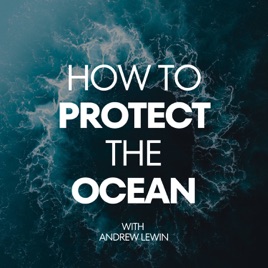
4.8
185
1536
How To Protect The Ocean
Andrew Lewin

4.7
180
115
Crazy Town
Post Carbon Institute: Sustainability, Climate, Collapse, and Dark Humor

4.6
47
45
The Exotic Pet Collective
Richard
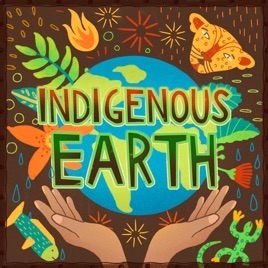
4.7
59
44
Indigenous Earth Community Podcast
Frank Oscar Weaver

4.8
79
194
The Wandering Naturalist
Three Rivers Park District
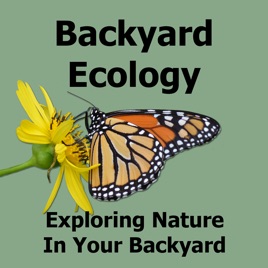
4.9
68
92
Backyard Ecology
Shannon Trimboli

4.8
114
24
In Search of Soil
Diego Footer

4.5
74
180
Songbirding: A Birding-by-ear Podcast
Rob Porter
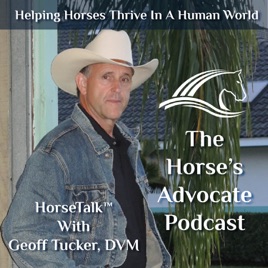
4.9
32
115
The Horse's Advocate Podcast
Geoff Tucker, DVM
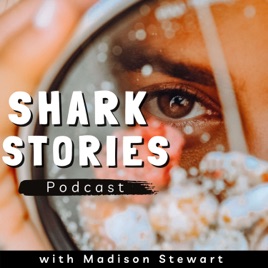
4.8
41
18
Shark Stories
Madison Stewart




